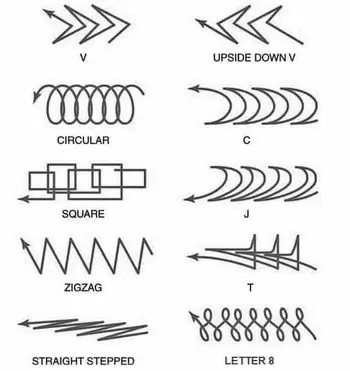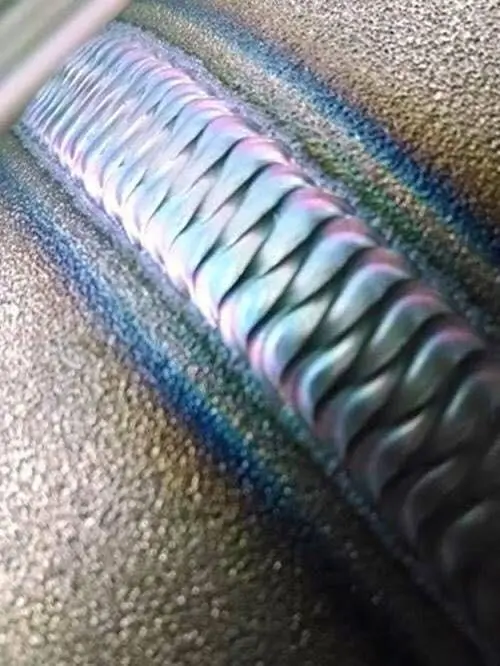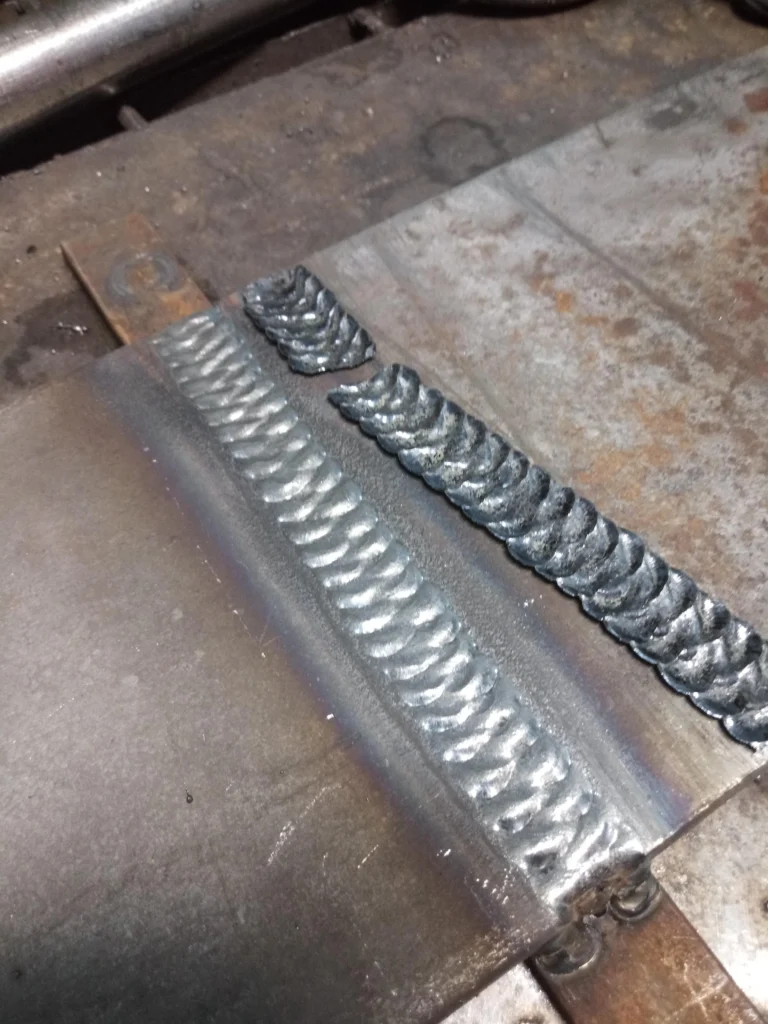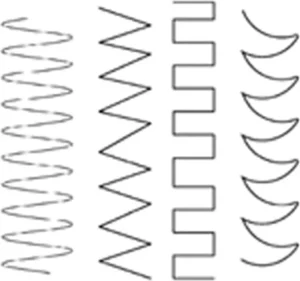The four easiest MIG Welding patterns for beginners to learn and master are the steady motion pattern, the whipping pattern, the circle pattern, and the weave pattern.
There are many things to remember when setting up your MIG welding machine. You need to set up your machine properly, clean your work area, and practice your technique until you are secure. Another important factor is the welding pattern you will use.
Welding patterns are a great cheat sheet as you learn to weld. They make it easier to adjust your weld to different joints before you get the know-how and experience to know how you want to weld off the cuff. Sticking to a pattern as you weld can help you with consistency until you master welding.
Here are some of the most common MIG welding patterns you should know.

Table of Contents
Why You Should Weld in a Pattern
You might be wondering why you need to weld in a pattern and why you can’t just weld however you feel like welding. If you want, you don’t need a pattern, but welding in a pattern can make your life much easier.
Think of welding patterns as a welding shortcut. If you don’t know how to weld a particular joint, remembering the right pattern for that technique can save you a lot of time thinking.
Sticking to the pattern also gives you a guiding line as you move forward. If you move along in the same pattern, your weld will look the same from beginning to end. If you try free-handing it but are not secure in your welding yet, the beginning might look very different from the end.
MIG welding in a pattern is a great idea, whether you’re a beginner or just someone who wants some assistance (for more MIG welding tips for beginner welders, go here).

The Steady Motion Welding Pattern
The steady motion welding pattern is one of the most basic welding techniques. It’s so simple that even a robot can do it (This is the welding pattern that most welding robots perform). A steady motion welding pattern consists of moving your welder back and forth at a steady pace.
Advantages
A major advantage of the steady motion welding pattern is its simplicity. You have to go back and forth, with no complicated maneuvers necessary.
It is also very versatile. When in doubt, you can use this pattern for any situation.
Disadvantages
Because the steady motion welding pattern is so simple, so there is nowhere to hide. You can’t cover up bad technique with this pattern, and any mistakes will be visible immediately.
When to Use It
You can use the steady motion welding pattern in almost any situation, including:
- In-position welding,
- Out-of-position welding, and
- Aluminum MIG welding.
How to Do It
To use a steady motion welding pattern, set your electrode angle and machine settings to the right ones for your metal. Then, adjust your welder so it is as hot as possible. Then, steadily move your welder.
Whipping Welding Pattern
A whipping welding pattern is when you alternate backward and forward, going forward twice and backward once.

Advantages
Whipping welding helps you compensate for any unevenness in your welding speed. Since you’re using multiple short welds instead of one long one, that gives you more control over your weld. This easier control is why whipping is a popular pattern with beginner welders.
Whipping welding patterns also create a narrow welding pool, which can help manage splatter.
Disadvantages
Some welders don’t like the whipping welding pattern because it causes more splatter if you are careless with your whipping motions, making cleaning up afterward more painful.
It also slows down your welding speed and is less effective if gaps between your welds exist.
Finally, many welders don’t like whipping for personal reasons. They see it as a technique only used by beginners, not one that true masters use.
When to Use It
You can use the whipping welding pattern for
- Fillet joints,
- Stringer beads,
- Welding thin metals, and
- First passes.
How to Do It
Adjust your welding machine settings. Then, move the weld two steps forward and one step backward.
Circle Welding Pattern
A circle welding pattern is when you make small, consecutive circles as you go along your weld.

Advantages
Circle welds blend the advantages of whipping and weaving. You get a steady speed plus coverage of wider joints.
You also have a lot of control over the width of your weld because you can adjust the size of your circles.
Disadvantages
Some welders complain that welding circles over and over again is inefficient and repetitive. It does slow down your welding somewhat and makes it harder to cover a long joint without your wrist hurting.
When to Use It
Circle welds are very versatile. You can use them for a few different situations, including
- Welding thicker materials,
- Vertical welding, and
- Flat welding.
It’s easier to think of situations where you can’t use circle welds than where you can.
How to Do It
Adjust the settings on your MIG welder according to the metal you are working with. Then, make a small circle with your welder. Move forward in the weld and create another circle. Repeat until you reach the end.
Weave Welding Pattern
The weave welding pattern uses side-to-side welds to create a joint.

Advantages
Weave welding’s biggest advantage is that it is great for welding wide joints. The side-to-side motion fills up a wide gap.
Disadvantages
You can’t use weave welding for situations where the joint bears a lot of weight, such as in structures built for shipyards. The high concentration of heat as you travel side to side may impact the structural integrity.
When to Use It
You can use the weave welding pattern for
- Vertical up or vertical down welding,
- Wide joints, and
- Grove welds.
How to Do It
To weave weld, start at the bottom of the joint. Move the welder from one side of the joint to the other, using a single pass or stringer bead. Then, bring it back to the first side, moving upwards.

Final Thoughts
Advanced welders don’t spend much time on patterns, but knowing when to use weaving, circle, whipping, or steady motion welding is an easy shortcut for beginners.
